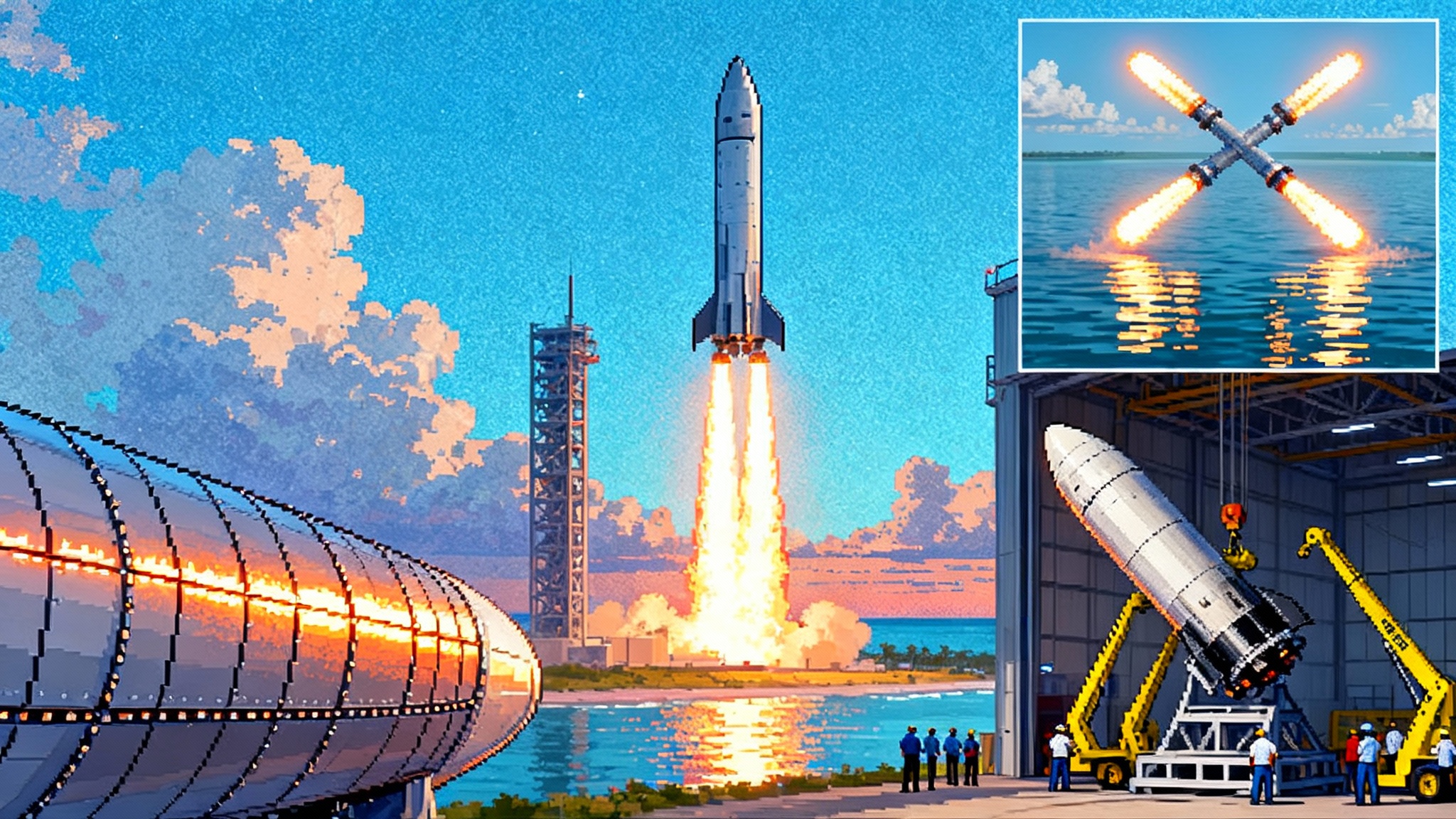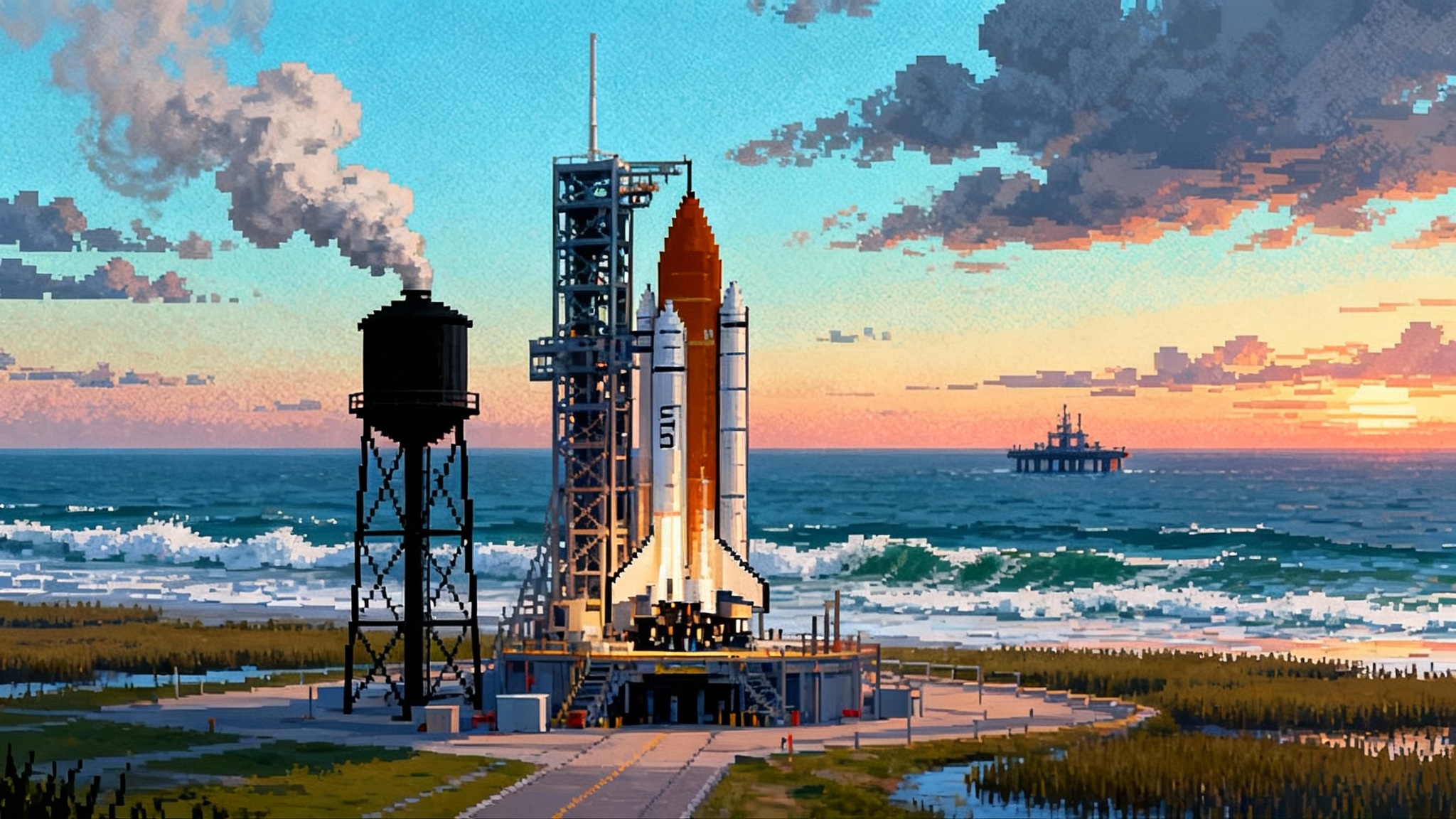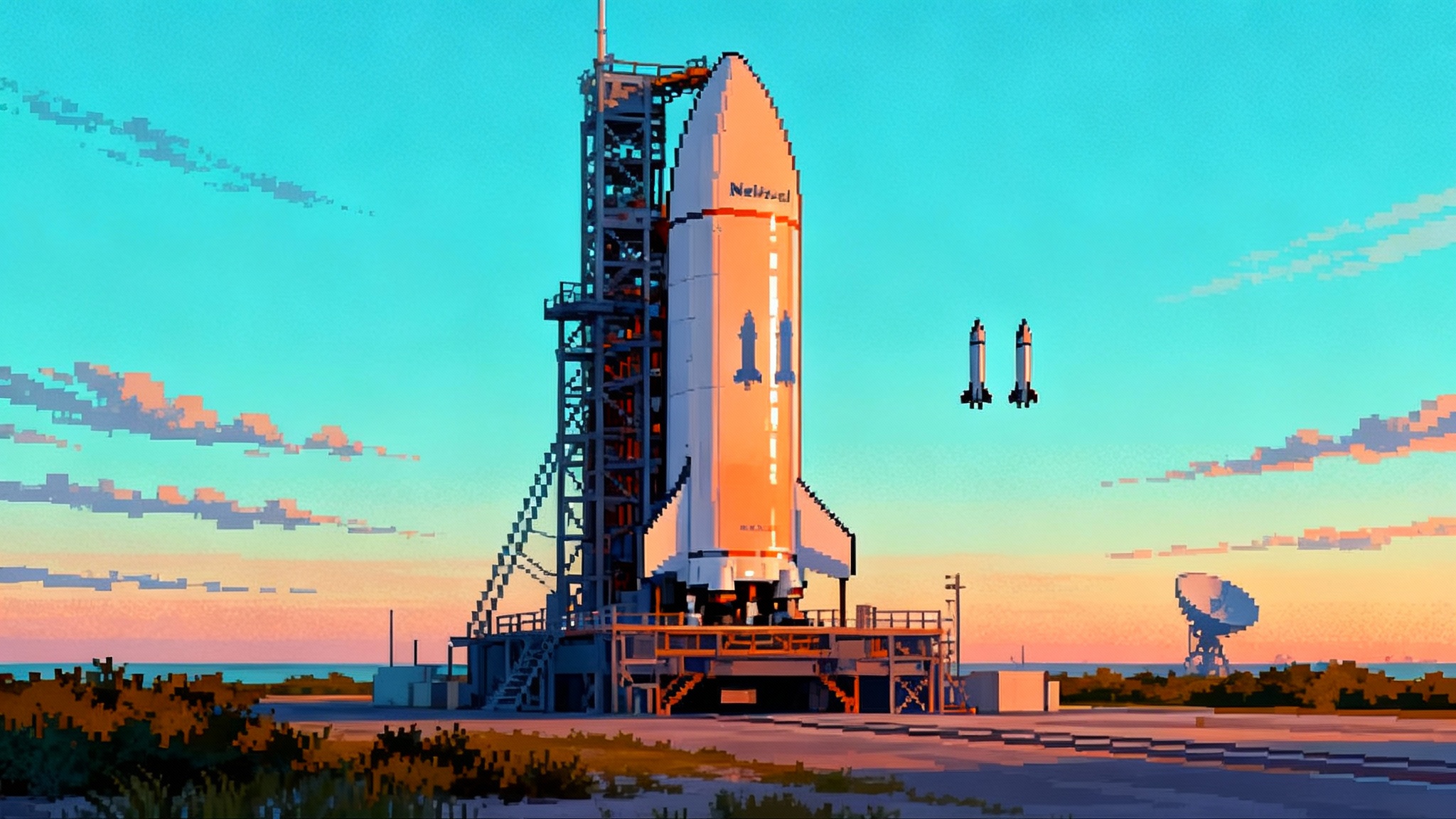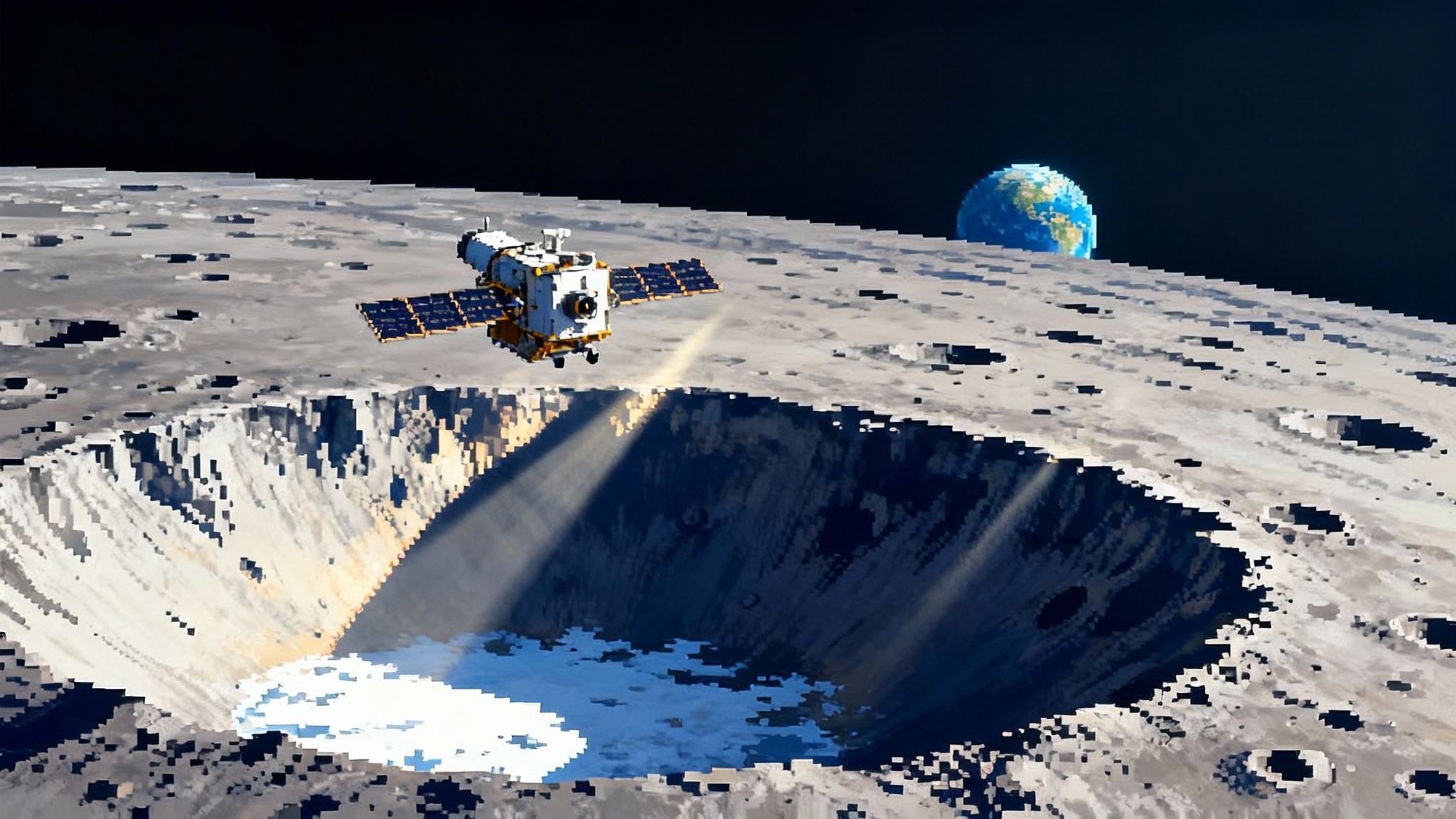Starship Flight 11: the week reusability jumps a gear
Starship Flight 11 is set for October 13 with a new landing-burn profile and a workhorse heat shield. Here is how those choices set up pad catches, faster turnarounds, near-term lunar cargo, and a clear three-flight roadmap.

The night the test program starts acting like an operation
If you care about reusable rocketry, circle October 13. SpaceX plans to launch Starship Flight 11 from Starbase in South Texas during a 75 minute window that opens at 7:15 p.m. Eastern, a schedule that, if met, marks the fifth Starship flight of 2025 and the one that deliberately shifts testing toward repeatable procedures. You can watch whether the vehicle sticks to a profile that looks less like experimentation and more like something you would run every week.
Flight 11’s checklist emphasizes two moves with consequences far beyond tonight’s splashdowns. First, Super Heavy will try a landing burn that starts with many engines lit, transitions to a denser mid phase, then finishes on the center cluster. Second, the ship’s thermal protection is configured to behave more like a workhorse heat shield the company expects to fly repeatedly, not a science fair of tile experiments. Together, those choices unlock the ability to catch boosters on the pad, shorten inspection cycles, and pull forward credible timelines for cargo toward the Moon.
The landing burn that unlocks the catch
SpaceX’s current plan for Super Heavy in Flight 11 is simple to state and rich in consequences. The booster will begin its descent burn with a large ignition, transition to a five engine divert phase that provides extra control authority and redundancy, then settle to the three center engines for hover and shutdown over the Gulf. If you think of a landing burn as the rocket equivalent of braking, this is like switching from two worn brake pads to a system with multiple calipers that can keep working even if one underperforms. The point is not a pretty ocean hover. The point is measuring how the vehicle responds as engines shut down and throttle up in a precise sequence that mimics the final seconds above the launch tower.
Why five engines in the middle of the burn rather than the three used on earlier flights? Because a pad catch leaves very little room for a thrust shortfall or a guidance nudge that arrives a fraction too late. More engines mean more vectors to steer with and more margin if a unit runs hot or a sensor is noisy. In plain terms, this profile trades a little extra propellant for a lot more control, which is exactly what you want when metal chopsticks the size of skyscraper girders are waiting to clasp a 70 meter booster.
Think through the chain of effects. If the booster can hold a stable hover above a specific point while modulating thrust across several engines, engineers can bring the arms into the loop next, first in a high hover rehearsal and then for a real catch. That removes the need for a droneship style fleet and, more importantly, positions the vehicle on the very pad where you want to stack it again. As competitors mature, from Rocket Lab’s Neutron to Blue Origin’s heavy lifter, the race increasingly hinges on ground cadence; context from a third reusable contender shows how much pad flow matters.
A more operational heat shield on the ship
On Flight 10 in August, Starship reached splashdown after a clean reentry, but post flight imagery showed two important clues. A few test tiles oxidized orange and there were white streaks where heat sneaked between tiles and ablated the layer underneath. SpaceX’s build and flight reliability chief, Bill Gerstenmaier, summarized the lesson clearly: seal the tiles. Flight 11 reflects that lesson with a configuration aimed at routine operations rather than experimental tile mixes. The target is not perfection. It is durable performance with predictable wear patterns that a ground crew can inspect quickly and fix quickly. See Gerstenmaier’s tile sealing lesson from Flight 10.
If you have ever worked on a roof, the analogy is apt. The tiles are shingles; the sealed gaps are the flashing; and the ablative underlayer is the weatherproof membrane. Flight 10 proved the house kept out the storm. Flight 11 aims to prove the roof can do that while being easy to maintain.
Faster turnaround is not a slogan, it is a checklist
The two changes above are not racing stripes. They are nuts and bolts steps toward turnaround math that actually closes.
- Catch on the pad and you eliminate tow time, barge ops, and saltwater exposure. That cuts corrosion checks from days to hours and keeps the booster in clean, known hands.
- Fly with a heat shield designed for reuse and you avoid the tile lottery. Fewer missing tiles and better sealed gaps mean fewer borescopes and bond pull tests. That turns what used to be an all hands inspection into a tight, pre planned walkthrough.
- Standardize the burn sequence and reentry profile and you can write procedures that survive personnel rotation. That is how airlines go from heroic maintenance to predictable maintenance.
SpaceX’s approach is to iterate hardware in flight rather than quarantining every change to the ground. Whether you love or dislike that style, it is the only way to find out how an idea ages across multiple flights by the same vehicle. Flight 11 is built to generate exactly that kind of age in the data.
Near term lunar cargo runs become credible
NASA selected a Starship derivative as the first Human Landing System for Artemis. That crewed mission will require on orbit refueling and far more mission integration, so nobody should expect a crewed landing this year. But a cargo run is simpler. If Super Heavy catches at the pad and Ship reenters with minimal tile work, SpaceX can plausibly argue it is ready to demonstrate a no crew lunar cargo profile as soon as the propellant transfer sequence is ready and the orbital traffic management plan is in place. The new landing burn and the more operational heat shield do not solve prop transfer. They clear the path to spend most engineering hours on prop transfer.
What cargo goes first? Think mass simulators and infrastructure kits that do not mind a few weeks in storage. Think communications relays for cislunar space, small auxiliary tugs, and surface cargo pallets. All of them benefit from any system that can drop tens of tonnes near the Moon for the price of a small satellite today. Missions that map lunar fuel and metals are exactly the kind of early payloads that make the economics snowball.
What Flight 11 repeats on purpose
Expect SpaceX to repeat a few successes from Flight 10. In space engine relight verifies that a Raptor can go from orbital cold to steady thrust. Dummy payload deployments verify that the door hardware and guidance can behave like a freight elevator rather than a science fair catapult. And a targeted splashdown tests the guidance loop down to the last mile over both the Gulf and the Indian Ocean. These are not trophies. They are prerequisites.
Finally, Flight 11 is widely described as the last outing for this vehicle variant before a larger Version 3 arrives. That matters because tonight’s data informs how aggressive SpaceX can be with the next hardware. A reliable five engine divert and a tidy heat shield story give engineers permission to increase thrust margins and structural allowances in Version 3 without adding maintenance surprises. As Blue Origin’s heavy lifter advances, see how New Glenn’s NG-2 sets Mars course for broader industry context.
The next three flights: a realistic roadmap
The point is not to predict dates. The point is to sketch a sequence where each flight unlocks something tangible. Here is a pragmatic three flight arc that follows directly from Flight 11’s goals and the company’s public direction.
Flight 12: rehearsal for the catch and the ship’s return profile
- Milestone: Super Heavy conducts a high hover over the pad with the arms parked at a safe distance, then descends to a Gulf splashdown. The burn sequence mirrors Flight 11 but with a tighter hover box and more aggressive throttle transitions near tower height.
- Why it matters: High hover is the last step before a catch because it exercises the same guidance corridor and gives the ground team a full speed timer on how long they can keep the tower active before the booster must divert.
- Secondary objective: Starship performs pronounced banking at subsonic speeds after reentry to validate guidance for a true return to launch site profile. The heat shield gets a post flight inspection with fewer tiles replaced, validating the operational configuration.
- What it unlocks: A real catch attempt on the next flight and the first serious conversation with regulators about alternating reusable turn pads.
Flight 13: first catch and first 7 day reuse of a Super Heavy
- Milestone: Controlled catch of Super Heavy by the launch tower arms. The vehicle is safed, lowered to the transporter, and rolled to the integration bay for rapid checks. The goal is to fly the same booster within a week, even if the attempt slips to ten days.
- Why it matters: Time on the ground is money. A clean catch avoids saltwater teardown and validates the mechanical and software choreography of the tower. It also validates the emergency divert logic when the arms wave off.
- Secondary objective: In space, Ship relights a Raptor, executes a small plane change, then performs a controlled splashdown. Engineers track tile wear patterns and compare them to prior flights to confirm that seam sealing and underlayer ablation are predictable.
- What it unlocks: If the booster actually flies again within a week, the factory can slow down on raw booster count and focus on engines, ships, and tankers. That reallocates skilled labor to the propellant transfer program.
Flight 14: first end to end propellant transfer demo and on orbit assembly test
- Milestone: Two Starships rendezvous in low Earth orbit. One is a tanker variant with extra propellant margin. The other is an instrumentation heavy receiver. They dock, settle propellants, and transfer a small but measurable load. The pair then separate and the receiver performs a series of burns to simulate payload delivery.
- Why it matters: No refueling, no Moon. This is the critical path for human landing and for any Mars cargo stage. Even a modest transfer validates plumbing, slosh control, thermal conditioning, and guidance.
- Secondary objective: The two vehicles test a simple on orbit assembly task such as the temporary mounting of a structural truss segment or a large antenna panel carried by one of the ships. The goal is not a permanent build. It is a dress rehearsal for handling large hardware in free fall with vehicles this big.
- What it unlocks: A credible schedule for a near term uncrewed lunar cargo drop and a data backed plan for building large upper stages in orbit, including the tug or transfer stage you need to push cargo to Mars during a favorable window.
On orbit assembly and Mars transfer stages stop being slides
Why obsess over on orbit assembly so early? Because size solves problems you used to solve with complexity. A single Starship can loft parts that used to demand a stack of smaller launches and weeks of robotic operations. A propellant depot plus a tug gives you a modular way to move large items between orbits without strapping every mission to a fresh upper stage. That is how you assemble thousand square meter solar arrays for power hungry platforms. That is how you deliver radiation shelters and pressure vessels sized for long Mars transits.
To make that real, the ground game must match the space game. Catches, seals, and checklists are the quiet heroes here. A rocket that can be caught, inspected in hours, and relaunched on the same pad turns every clean launch into an opportunity to push assembly and transfer demos one step forward.
The ground revolution you will not see in the webcast lower third
If Flight 11 goes to plan, the footage will highlight plumes and glow. The operational revolution will be in the gaps between flights. You will know the heat shield is working when the tile map changes by inches instead of feet. You will know the landing burn is working when the hover box contracts from the size of a neighborhood to the size of a parking lot. And you will know the factory plan is working when the same serial numbers appear again on the screen within days.
None of this guarantees a straight line. Engines can cough. Tiles can crack. Licenses can lag. But Flight 11 is the first time the company is testing the parts of the system that make daily spaceflight plausible: a booster that behaves like a helicopter in the last seconds and a ship that behaves like a truck when it comes home.
What to watch tonight
- On ascent: pace of engine chill, clean staging, and a trajectory that sets up a broad corridor over the Gulf. That keeps descent options open if winds misbehave.
- On the booster: the ignition count at the start of the landing burn, the transition to the denser mid phase, and a stable hover profile that could be transplanted above the tower next time. Look for small lateral corrections that show the new control authority at work.
- On the ship: a crisp reentry attitude, evidence of controlled banking at subsonic speeds, and a hull that looks boring in post flight imagery because the seals did their job.
Starship set out to make spaceflight feel normal. The way it gets there is by making reusability feel boring. Starship’s design goal of full and rapid reusability is not a marketing line. It is a list of burns, seals, catches, and checks you can run on a loop. If Flight 11 turns that loop a little faster, that is the week reusable rocketry jumps a gear.








